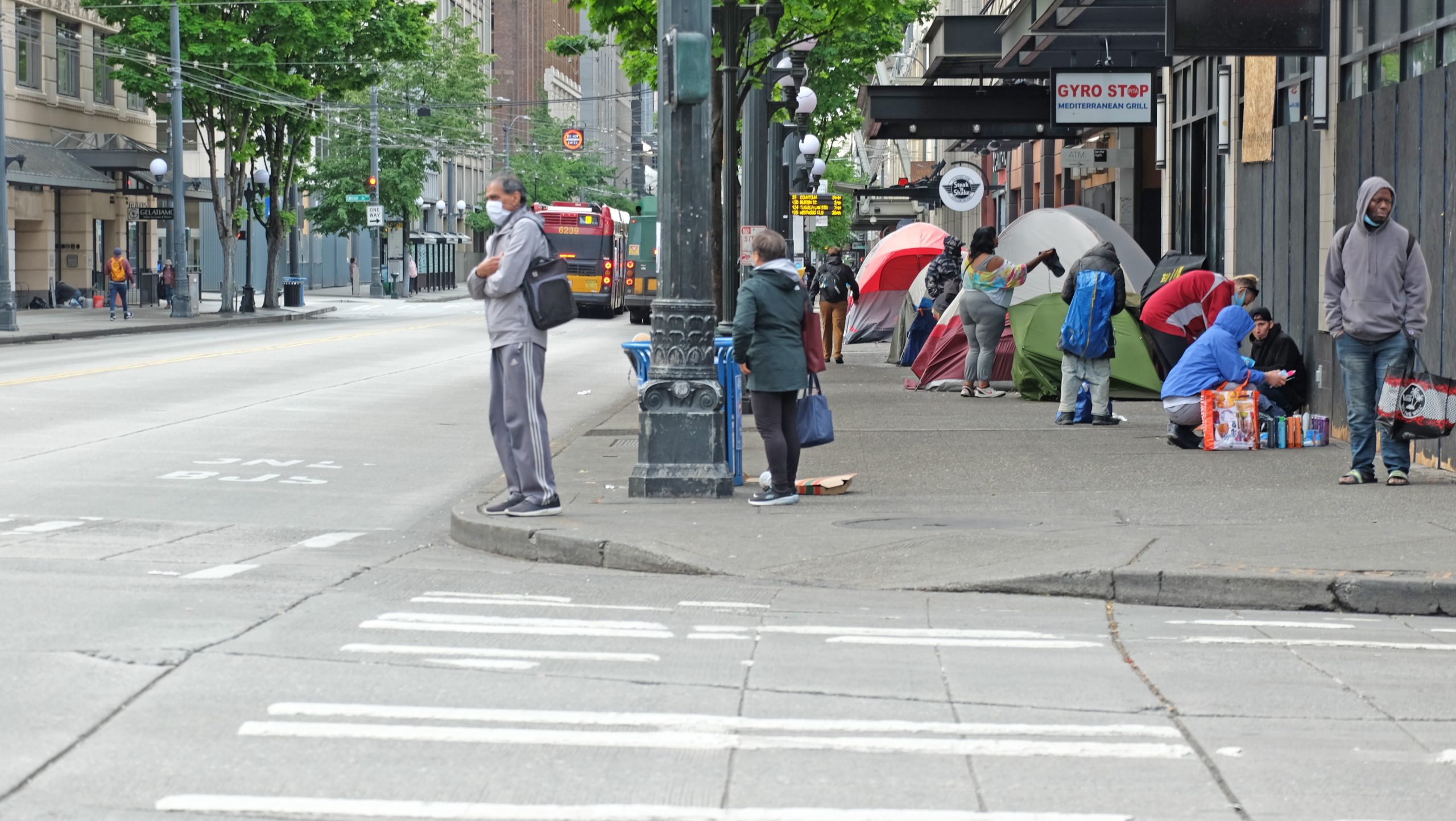News
The Seattle Times, Talton: Third Avenue is Seattle’s endangered lifeblood
Posted on

This column was originally published by The Seattle Times on Feb. 4, 2022.
By Jon Talton
Columnist
Living on Third Avenue now, I hear gunshots in the night. My residential building is constantly broken into by burglars.
This is a new phenomenon on my end of Third, emerging in recent months. Farther south on Third, a man was shot at a bus stop Wednesday morning. My colleague Danny Westneat recently pointed out that violent crime is rising throughout the city to levels not seen since the early 2000s.
Segments of Third have always had problems, around Pike-Pine and near the King County Courthouse. Every mayor comes in promising to fix it, yet here we are. It’s worse than ever before.
The expanding rot of Third Avenue, alas, is at least two years in the making. Third lacks the leafy beauty of Fourth or the condo canyon of Second, but it is still one of the most important commercial streets in Seattle and the main downtown bus corridor. It’s the city’s lifeblood.
But it’s in deep trouble.
Nineteen brick-and-mortar retailers or restaurants closed on Third this past year alone, including a busy Starbucks. Other closings since early 2020 include such major retailers as Bed Bath & Beyond, Bergman Luggage, Macy’s, Columbia Sportswear, T.J. Maxx, IGA Kress grocery and Bartell Drugs.
Jon Scholes, president of the Downtown Seattle Association, told me, “Given the function it plays — buses, dense employment, culture, near shopping, the convention center and Pike Place Market — Third Avenue is everybody’s street. It’s the lobby to our city and should be the most welcoming street. Today it is not.”
The reasons are several: The pandemic emptied out offices, mostly peaceful protests after the 2020 murder of George Floyd were accompanied by a riot downtown and repeated looting. Crime rose, including organized shoplifting, while the Seattle police lost officers. Tents proliferated.
Finally, the boarded-up storefronts violated one of the axioms of Jane Jacobs, the mother of urbanism, “eyes upon the street.” For a city of strangers to feel safe mingling together, “there must be eyes upon the street, eyes belonging to those we might call the natural proprietors of the street.”
Third “has not had the attention, commitment or resources given to public safety, pedestrians, businesses along the street and its function as a high-density transit corridor,” Scholes said. “The central section … centered between Stewart and Union remains a major challenge. Our surveys show these are places people want to avoid.”
Public safety is especially failing.
“We need a level of commitment from the public sector that we haven’t seen over many years,” Scholes said. “That includes increased maintenance, security, social services and breaking up of drug markets. Third has been turned over making it possible to operate illegal businesses openly. Those running illegal enterprises have capital from goods stolen from adjacent retailers. They use vulnerable people as labor and as customers.”
One of Third’s additional challenges is the unintended consequence of it being a busy bus corridor. For example, lost parking spaces on Third played a role in Zanadu Comics closing its brick-and-mortar store, one of the delights of downtown.
Bus stops were crowded and lacked security, putting passengers at risk and blocking sight lines, thus concealing criminals in the throng.
Third Avenue is overburdened as a transit corridor. When creating it, officials failed to follow best practices, such as wider sidewalks, more inviting waiting areas, and better security and maintenance. Copenhagen, Denmark, for example, operates corridors with all-electric, high-frequency buses that have lower floors and easy boarding.
With light rail completed to Northgate, Seattle has the opportunity to reconfigure transit downtown. More buses could use Second Avenue, too. Building the First Avenue streetcar is another essential step.
“What happens on Third will be a litmus test on whether Seattle has turned a corner in addressing substance abuse, drug dealing, homelessness, safety and shoplifting,” Scholes said. “New retail deals are at risk. It’s a critical and fragile moment on Third and in the retail core.”
He agrees with me that we have assets other cities would kill for, including those in the central core: The flagship Nordstrom, Pike Place Market, the transit tunnel and cultural amenities, including Benaroya Hall on Third.
“But street abandonment by the municipal government is a big impediment to bringing in new retailers,” he said. “They have to lock into a 10-year lease and [have] confidence it will be safe for customers and employees. It’s something that endangers bringing conventions and tourism and workers back.”
It endangers more: The businesses trying to make a stand on Third, such as Wild Ginger restaurant and the Gelatiamo snack shop, whose struggles were highlighted in an article by Mike James in the Post Alley blog.
I’m waiting for signs that new Mayor Bruce Harrell and new tough-on-crime City Attorney Ann Davison understand that Third is ground zero in reclaiming Seattle. This is everybody’s street, certainly not one owned by criminals.
The streets problems go beyond crime, to be sure.
But all Seattleites will be victimized until this essential artery is cleaned up. Harrell, Davison and the City Council need to solve the riddle of Third, which has been a can kicked by every previous administration. Otherwise, it will continue to be a scar running the length of downtown, spreading its troubles to other streets, too.